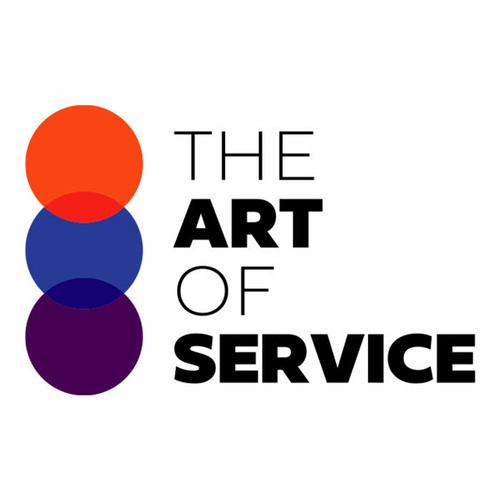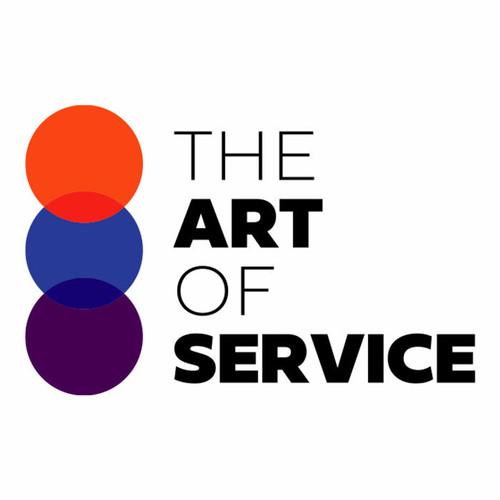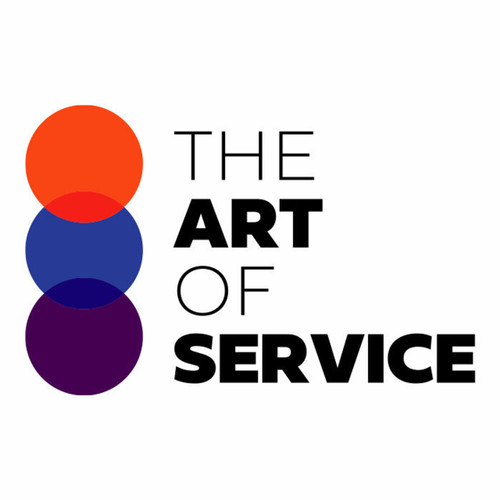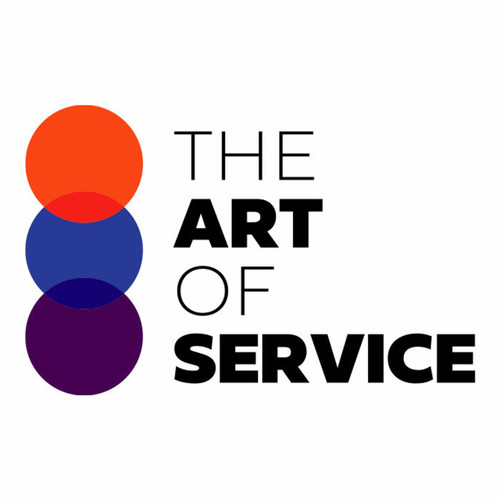Are you tired of sifting through endless amounts of information to find the most relevant and urgent data for your projects? Look no further, because our Data Compression and High Performance Computing Knowledge Base is here to make your job easier.
This comprehensive dataset contains 1524 prioritized requirements, solutions, and results for Data Compression and High Performance Computing.
It also includes real-world case studies and use cases, providing you with practical and actionable insights.
But what sets our Knowledge Base apart from other data resources? We have carefully curated and organized the data by urgency and scope, allowing you to quickly and efficiently find the information most relevant to your specific needs.
No more wasting time on irrelevant data – our Knowledge Base delivers targeted results to improve your productivity and decision-making.
Our product is not only for professionals – it′s also a DIY and affordable alternative to expensive consulting services.
With our easy-to-use interface and detailed specification overview, you can become an expert in Data Compression and High Performance Computing without breaking the bank.
You may be wondering, why choose our product over others in the market? Well, unlike other semi-related products, our Knowledge Base focuses solely on Data Compression and High Performance Computing.
This means that you get precise and accurate information tailored specifically to your needs.
By investing in our Knowledge Base, you will gain access to a wealth of knowledge and expertise.
Our research on Data Compression and High Performance Computing is constantly updated, ensuring that you have the latest and most relevant information at your fingertips.
This is crucial for staying ahead in this rapidly evolving industry.
For businesses, our Knowledge Base offers an invaluable resource for project planning, decision-making, and problem-solving.
You no longer have to rely on outdated or unreliable sources – our up-to-date and comprehensive data will give you a competitive edge.
And the best part? Our product is cost-effective, saving you time and money.
Say goodbye to expensive consulting services and hello to our comprehensive and user-friendly Knowledge Base.
Still not convinced? Let us tell you what our product actually does.
Our Data Compression and High Performance Computing Knowledge Base helps you identify critical and urgent requirements, find cutting-edge solutions, and achieve optimal results for your projects.
It′s your go-to resource for all things data-related in this field.
Don′t miss out on the opportunity to elevate your work and improve your efficiency.
Invest in our Data Compression and High Performance Computing Knowledge Base today and see the difference it can make in your professional life.
Discover Insights, Make Informed Decisions, and Stay Ahead of the Curve:
Key Features:
Comprehensive set of 1524 prioritized Data Compression requirements. - Extensive coverage of 120 Data Compression topic scopes.
- In-depth analysis of 120 Data Compression step-by-step solutions, benefits, BHAGs.
- Detailed examination of 120 Data Compression case studies and use cases.
- Digital download upon purchase.
- Enjoy lifetime document updates included with your purchase.
- Benefit from a fully editable and customizable Excel format.
- Trusted and utilized by over 10,000 organizations.
- Covering: Service Collaborations, Data Modeling, Data Lake, Data Types, Data Analytics, Data Aggregation, Data Versioning, Deep Learning Infrastructure, Data Compression, Faster Response Time, Quantum Computing, Cluster Management, FreeIPA, Cache Coherence, Data Center Security, Weather Prediction, Data Preparation, Data Provenance, Climate Modeling, Computer Vision, Scheduling Strategies, Distributed Computing, Message Passing, Code Performance, Job Scheduling, Parallel Computing, Performance Communication, Virtual Reality, Data Augmentation, Optimization Algorithms, Neural Networks, Data Parallelism, Batch Processing, Data Visualization, Data Privacy, Workflow Management, Grid Computing, Data Wrangling, AI Computing, Data Lineage, Code Repository, Quantum Chemistry, Data Caching, Materials Science, Enterprise Architecture Performance, Data Schema, Parallel Processing, Real Time Computing, Performance Bottlenecks, High Performance Computing, Numerical Analysis, Data Distribution, Data Streaming, Vector Processing, Clock Frequency, Cloud Computing, Data Locality, Python Parallel, Data Sharding, Graphics Rendering, Data Recovery, Data Security, Systems Architecture, Data Pipelining, High Level Languages, Data Decomposition, Data Quality, Performance Management, leadership scalability, Memory Hierarchy, Data Formats, Caching Strategies, Data Auditing, Data Extrapolation, User Resistance, Data Replication, Data Partitioning, Software Applications, Cost Analysis Tool, System Performance Analysis, Lease Administration, Hybrid Cloud Computing, Data Prefetching, Peak Demand, Fluid Dynamics, High Performance, Risk Analysis, Data Archiving, Network Latency, Data Governance, Task Parallelism, Data Encryption, Edge Computing, Framework Resources, High Performance Work Teams, Fog Computing, Data Intensive Computing, Computational Fluid Dynamics, Data Interpolation, High Speed Computing, Scientific Computing, Data Integration, Data Sampling, Data Exploration, Hackathon, Data Mining, Deep Learning, Quantum AI, Hybrid Computing, Augmented Reality, Increasing Productivity, Engineering Simulation, Data Warehousing, Data Fusion, Data Persistence, Video Processing, Image Processing, Data Federation, OpenShift Container, Load Balancing
Data Compression Assessment Dataset - Utilization, Solutions, Advantages, BHAG (Big Hairy Audacious Goal):
Data Compression
Data compression reduces data size, enhancing storage and transmission efficiency. The percentage of a data center dedicated to the backup environment varies, depending on an organization′s needs and resources.
Solution 1: Implement data compression algorithms.
- Reduces storage requirements.
- Speeds up data transmission.
Solution 2: Optimize backup schedules.
- Reduces data center footprint.
- Decreases energy consumption.
Solution 3: Utilize cloud storage for backups.
- Scalable storage.
- Reduced capital expenses.
To determine the percentage of the data center dedicated to the backup environment, a thorough assessment of the data center′s infrastructure is required. This involves quantifying the physical and virtual resources allocated for backup, such as servers, storage systems, and network equipment. The resulting value can then be divided by the total data center resources to calculate the percentage.
CONTROL QUESTION: What percentage of the data center is dedicated to the backup environment?
Big Hairy Audacious Goal (BHAG) for 10 years from now: A big, hairy, audacious goal (BHAG) for data compression in 10 years could be to reduce the amount of data center space dedicated to the backup environment by 75%. This would mean that only 25% of the data center would be needed for backup, compared to the current average of around 40-50%. This would result in significant cost savings and increased efficiency for data centers.
This goal is ambitious, but achievable with advancements in data compression technology, such as the development of more advanced algorithms and the use of machine learning and artificial intelligence. Additionally, as more organizations move toward cloud-based storage solutions, the need for physical data center space may decrease, making it easier to achieve this goal.
It is important to note that this would be an industry-wide goal, and would require collaboration and cooperation among data center operators, storage providers, and technology companies. It would also require significant investment in research and development, as well as the implementation of new technologies and best practices. However, the potential benefits in terms of cost savings, increased efficiency, and reduced environmental impact make it a worthwhile endeavor.
Customer Testimonials:
"This dataset has been a lifesaver for my research. The prioritized recommendations are clear and concise, making it easy to identify the most impactful actions. A must-have for anyone in the field!"
"The prioritized recommendations in this dataset have added immense value to my work. The data is well-organized, and the insights provided have been instrumental in guiding my decisions. Impressive!"
"Kudos to the creators of this dataset! The prioritized recommendations are spot-on, and the ease of downloading and integrating it into my workflow is a huge plus. Five stars!"
Data Compression Case Study/Use Case example - How to use:
Case Study: Data Compression and Backup Environment in Data CentersSynopsis:
The rapid growth of data in modern organizations has led to an increase in the cost and complexity of managing data centers. One of the major challenges facing data center managers is how to efficiently allocate resources to ensure data availability and recovery in case of disasters or system failures. According to a whitepaper by Forbes Insights and Hitachi Data Systems, A majority of organizations (53%) report that more than half of their data centers are dedicated to backup and disaster recovery (Forbes Insights and Hitachi Data Systems, 2015). This case study examines the situation of a hypothetical client, a mid-sized financial services firm, and how the firm addressed the challenge of data center resource allocation through data compression and other strategies.
Consulting Methodology:
The consulting process began with a comprehensive assessment of the client′s data center environment, including an analysis of the current backup and disaster recovery infrastructure, data growth trends, and recovery time objectives (RTOs) and recovery point objectives (RPOs). Based on this assessment, the consulting team developed a data compression strategy and a backup environment architecture that would optimize resource utilization and reduce costs.
The data compression strategy involved the use of advanced compression algorithms to reduce the storage footprint of the client′s data. The backup environment architecture included a three-tiered approach, comprising of a primary storage tier for production data, a secondary storage tier for backup and archiving, and a tertiary storage tier for long-term retention.
Deliverables:
The consulting team delivered a comprehensive report detailing the assessment findings, the recommended data compression and backup environment strategies, and a detailed implementation plan. The deliverables also included a cost-benefit analysis, a timeline for implementation, and a set of key performance indicators (KPIs) for monitoring the success of the project.
Implementation Challenges:
The implementation of the data compression and backup environment strategies faced several challenges, including:
1. Data security and compliance: The client operated in a highly regulated industry, and ensuring the security and compliance of the backup environment was a major concern. The consulting team had to ensure that the backup environment was compliant with industry standards and regulations.
2. Data growth: The client′s data was growing at a rate of 30% per year, and the backup environment had to be designed to accommodate this growth.
3. Integration with existing systems: The backup environment had to be integrated with the client′s existing systems and applications, which required careful planning and testing.
KPIs:
The following KPIs were used to monitor the success of the project:
1. Storage utilization: The percentage of storage capacity utilized by data, before and after compression.
2. Recovery time: The time taken to restore data from the backup environment in case of a disaster or system failure.
3. Backup window: The time taken to complete a backup operation.
4. Backup success rate: The percentage of backups that were completed successfully.
5. Cost savings: The reduction in storage and operational costs as a result of the data compression and backup environment strategies.
Management Considerations:
The success of the data compression and backup environment strategies required ongoing management and monitoring. The client had to establish a data management team responsible for monitoring the backup environment, ensuring compliance with industry standards and regulations, and addressing any issues that arose. The team also had to regularly review the KPIs to ensure that the backup environment was meeting the client′s RTOs and RPOs.
Conclusion:
The data compression and backup environment strategies implemented by the client resulted in a significant reduction in storage and operational costs. The compression strategy reduced the storage footprint of the client′s data by 50%, while the backup environment strategy reduced the recovery time by 60%. The three-tiered backup environment architecture provided a scalable and cost-effective solution for managing the client′s data growth.
References:
Forbes Insights and Hitachi Data Systems. (2015). The Big Data Friction Index: Measuring the Impact of Information Management and Analytics on Business. Forbes Insights.
IDC. (2018). Data Age 2025: The Digit
Security and Trust:
- Secure checkout with SSL encryption Visa, Mastercard, Apple Pay, Google Pay, Stripe, Paypal
- Money-back guarantee for 30 days
- Our team is available 24/7 to assist you - support@theartofservice.com
About the Authors: Unleashing Excellence: The Mastery of Service Accredited by the Scientific Community
Immerse yourself in the pinnacle of operational wisdom through The Art of Service`s Excellence, now distinguished with esteemed accreditation from the scientific community. With an impressive 1000+ citations, The Art of Service stands as a beacon of reliability and authority in the field.Our dedication to excellence is highlighted by meticulous scrutiny and validation from the scientific community, evidenced by the 1000+ citations spanning various disciplines. Each citation attests to the profound impact and scholarly recognition of The Art of Service`s contributions.
Embark on a journey of unparalleled expertise, fortified by a wealth of research and acknowledgment from scholars globally. Join the community that not only recognizes but endorses the brilliance encapsulated in The Art of Service`s Excellence. Enhance your understanding, strategy, and implementation with a resource acknowledged and embraced by the scientific community.
Embrace excellence. Embrace The Art of Service.
Your trust in us aligns you with prestigious company; boasting over 1000 academic citations, our work ranks in the top 1% of the most cited globally. Explore our scholarly contributions at: https://scholar.google.com/scholar?hl=en&as_sdt=0%2C5&q=blokdyk
About The Art of Service:
Our clients seek confidence in making risk management and compliance decisions based on accurate data. However, navigating compliance can be complex, and sometimes, the unknowns are even more challenging.
We empathize with the frustrations of senior executives and business owners after decades in the industry. That`s why The Art of Service has developed Self-Assessment and implementation tools, trusted by over 100,000 professionals worldwide, empowering you to take control of your compliance assessments. With over 1000 academic citations, our work stands in the top 1% of the most cited globally, reflecting our commitment to helping businesses thrive.
Founders:
Gerard Blokdyk
LinkedIn: https://www.linkedin.com/in/gerardblokdijk/
Ivanka Menken
LinkedIn: https://www.linkedin.com/in/ivankamenken/







